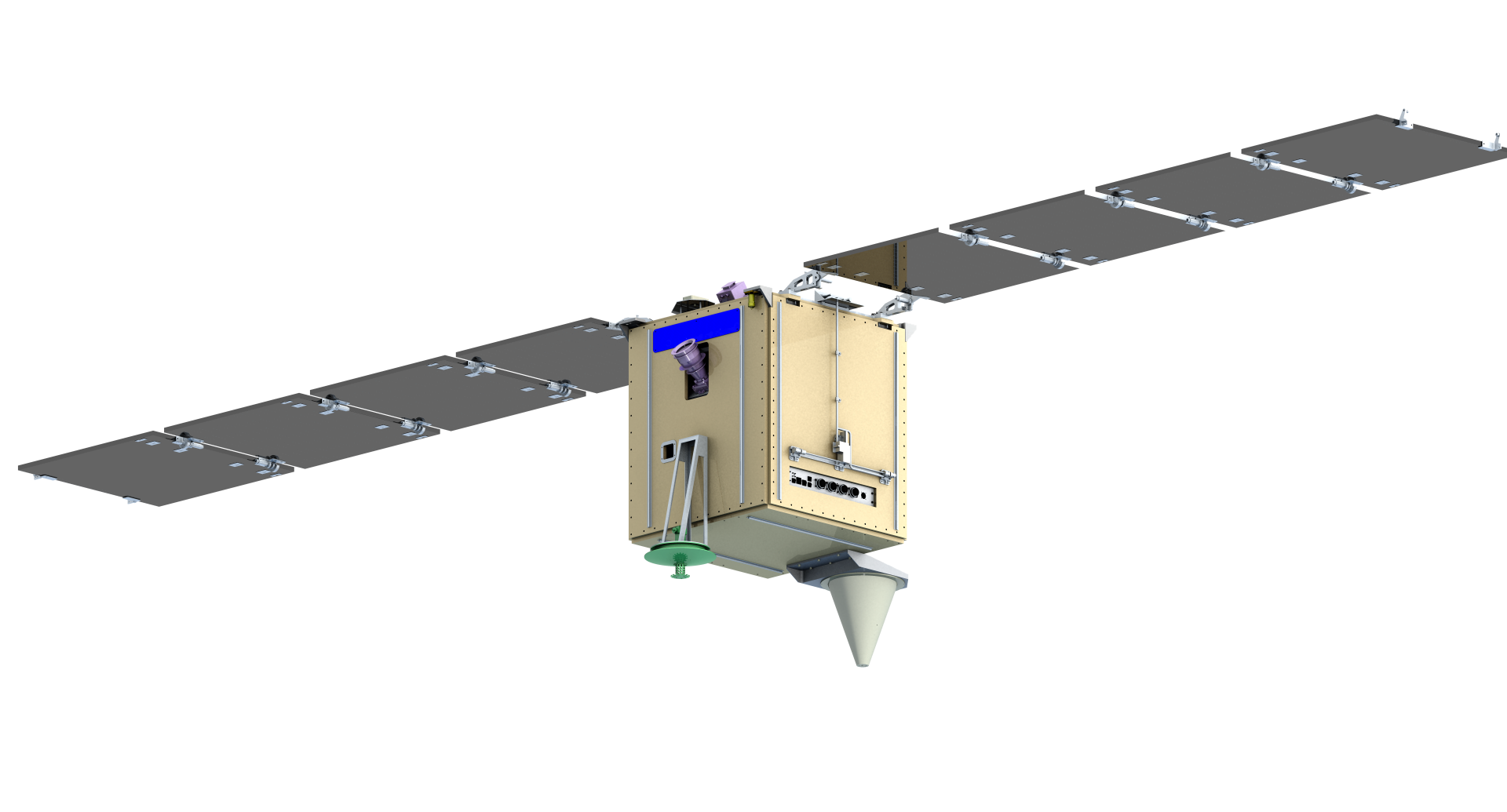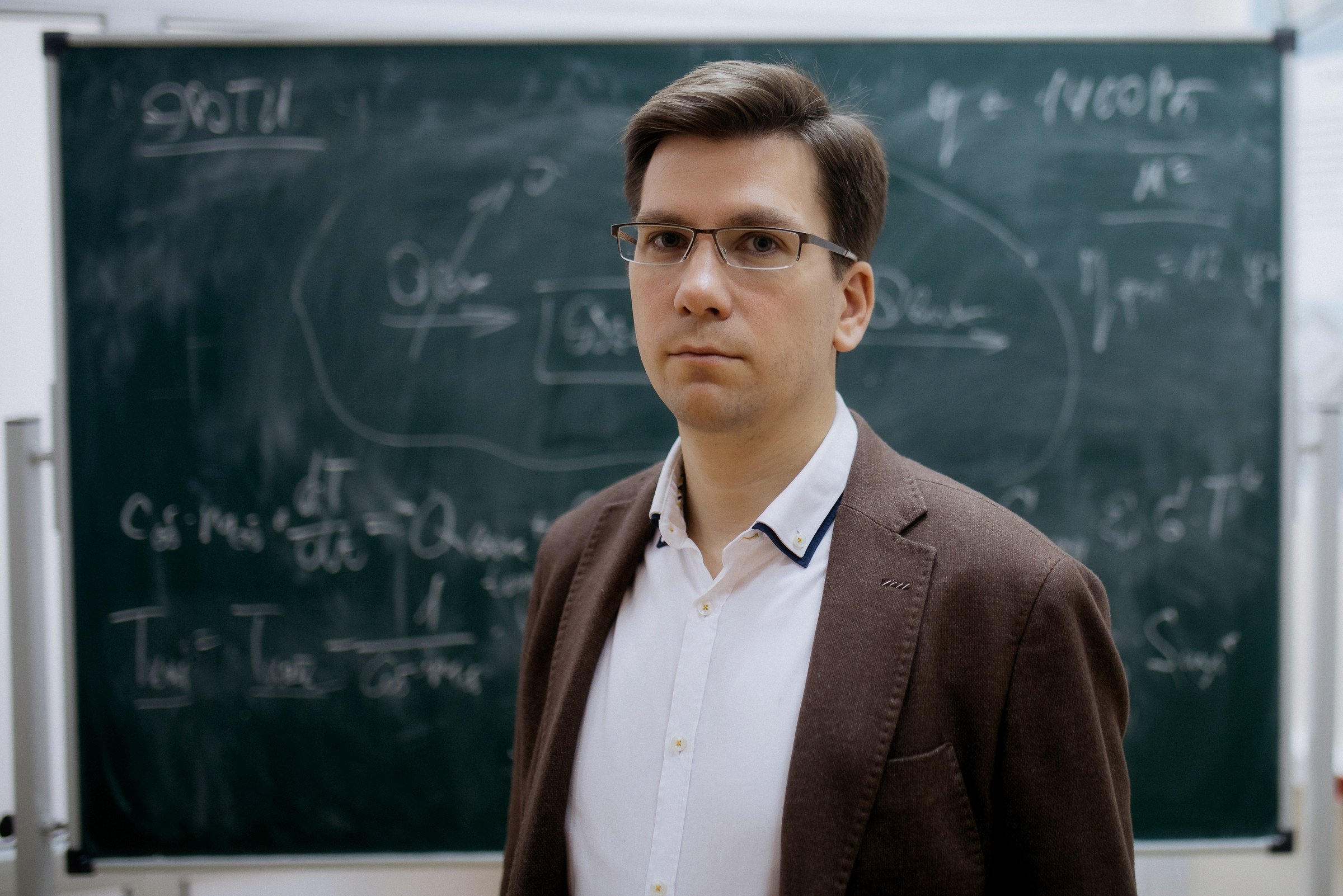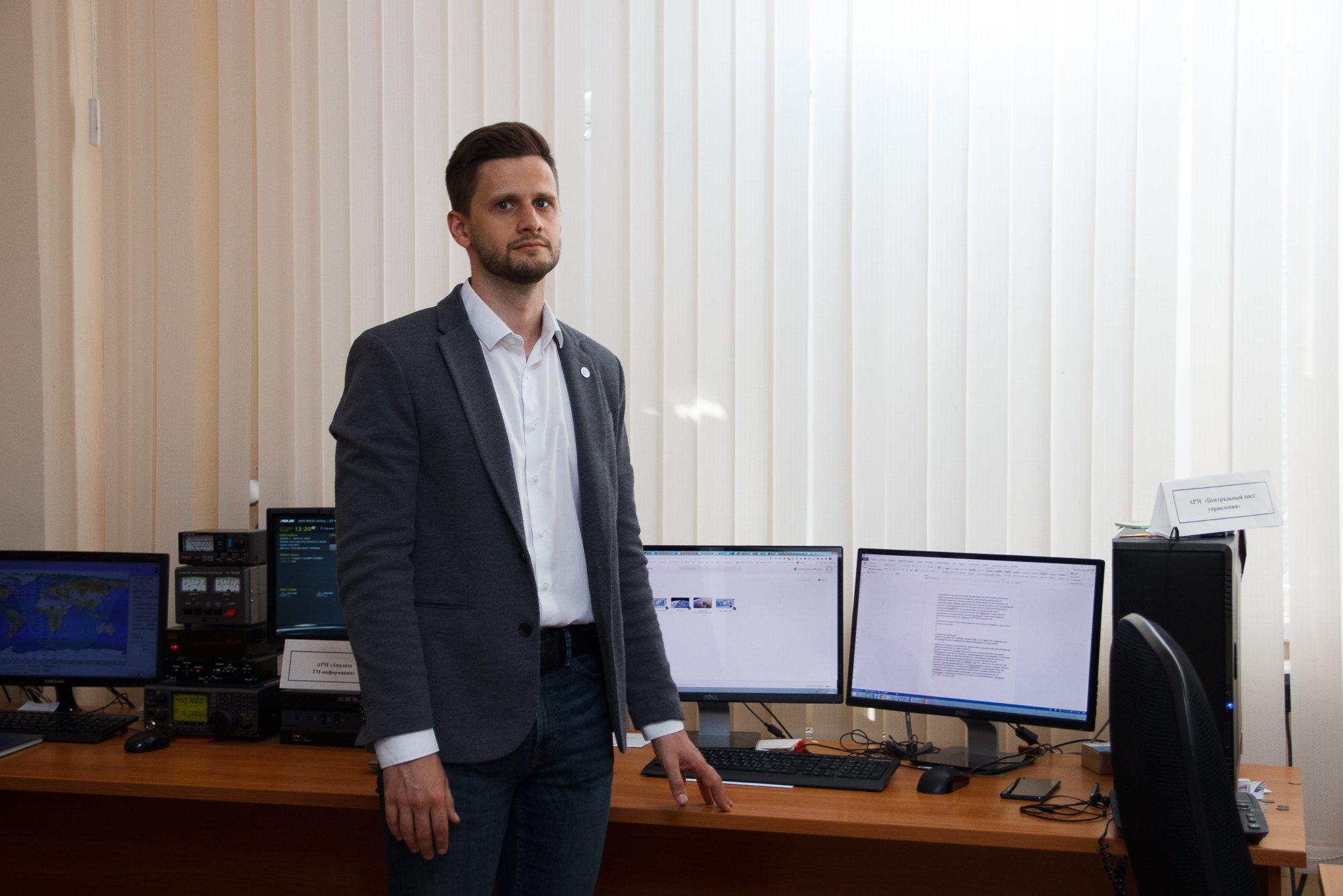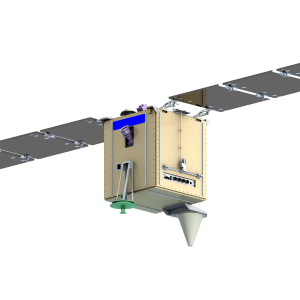The Russian Federal Service for Intellectual Property, Patents and Trademarks has granted Samara National Research University the patent for the utility model of a small-sized space platform developed there. Its main differences from existing platforms are simple design and technological solutions focused on mass production, as well as impressive energy capabilities providing a wide range of target loads.

The work is carried out at the expense of the grant from the Innovation Fund of the Samara Region, won in 2021. The team of five young scientists continued the development of the best ideas and technical solutions already implemented in the line of small-sized spacecrafts “AIST” of the first series, as well as “AIST-2D”. All the vehicles are currently in orbit. They were created in collaboration with Samara University and its strategic industrial partner – the PROGRESS Rocket and Space Centre.
As explained by Ivan Tkachenko, Director of Institute of Aviation and Space-Rocket Engineering of Samara University and one of the patent authors, development of the small-sized space platform was based on the project of the small-sized remote sensing spacecraft “AIST-3D” (MKA D33), prepared at Samara University in 2017-2019 on their own initiative. This spacecraft was designed in accordance with modern trends in space technology, its mass is half less than that of successfully operating “AIST-2D”.
“Having assessed prospects for space technology development, we decided to create the universal small-sized space platform “AIST-3” on the basis of the AIST-3D spacecraft. The platform, on which various sets of target equipment can be installed: for example, optoelectronic, infrared, radar (for remote sensing of the Earth), and telecommunication equipment, including that for providing broadband Internet access, and the Internet of Things. In 2021, we received funding from the Innovation Fund of the Samara Region, and by December we had completed the preparation of documentation in the scope of the technical proposal. Now the platform that we have developed has been granted patent protection”, said Ivan Tkachenko.

The patented small-sized space platform “AIST-3” is a complex of onboard systems and equipment. It is capable of providing orbital flight, orientation with the necessary accuracy, and full functioning of the target load, with energy consumption of up to 1,000 W. The target equipment mass is from 70 to 100 kg, while, as indicated in the patent documentation, the mass of the onboard equipment and systems is 169.3 kg. This platform is intended for quickly developing a line of small spacecrafts for various purposes.
Depending on the set of target equipment and energy needs, it is possible to change the dimensions of the spacecraft, as well as the size and configuration of its solar panels, within certain limits. The propulsion system is provided as part of the platform.
One of the key issues to be solved in course of developing the platform was accelerating and simplifying the process of technological preparation of production for the serial manufacturing of the devices. This is provided by simpler design solutions proposed by the patent authors. In the application, three previously patented space platforms are opposed to these solutions, and the patent office has recognized the novelty and usefulness of the development of Samara University.
«“In particular, we proposed to abandon the milled carrier frame of the spacecraft. This is a common solution, but the milling process is very time-consuming, besides, it is necessary to make equipment for welding, annealing, and subsequent machining of the structure. Our suggestion is to use riveted structures. Digital modeling has shown that this technology is applicable. It simplifies production, which is especially important now when the world has set the course for manufacturing hundreds and even thousands of similar spacecrafts”, explained Maksim Ivanushkin, a member of the team of authors, Assistant Lecturer at the Department of Space Engineering.
In 2022, the universal small-sized platform “AIST-3” was presented at the XV International Navigation Forum and Congress “Sphere”, as well as at the International Military-Technical Forum “Army-2022”.
For reference:
AISTs of the first series is the operating grouping of two small-sized and small-weight spacecrafts. Developed jointly by scientists of Samara University and specialists of the Progress Rocket and Space Centre (Samara, part of the Roscosmos State Corporation). It weighs 53 kg, including the adapter. Launched into orbit in April and November 2013. Currently, they are part of the satellite grouping of Samara University.
The life of the “AIST-1” flight vehicle was expected 3 years, for the “AIST-2” technological device it was determined in 1 year. The technological device stopped transmitting data in February 2020, having worked for more than 6 years, flight vehicle No. 1 continues to function, the data from it comes to the University Ground Control Complex for Small Spacecraft.
“AIST-2D” is an operating small-sized spacecraft for remote sensing of the Earth and a technology demonstrator. Developed in collaboration of Samara University and the Progress RSC. It was launched into orbit on April 28, 2016, during the first launch from the Russian Vostochny cosmodrome. it weighs 531.4 kg, with an estimated orbit height of 490 km.
Multispectral optoelectronic equipment provides optical image resolution in panchromatic mode – 1.48 m, in multispectral mode – 4.5 m, with 39.6 km capture bandwidth. According to the project, the life of the device is 3 years, but it has been in orbit for 6.5 years and continues to function. During this time, “AIST-2D” shot about 75 million sq. km of the Earth’s surface.
The target load also includes thermal infrared equipment and radar. Besides, there are five sets of scientific equipment created at the Institute of Space Instrumentation Engineering of Samara University. Currently, on the basis of the small spacecraft “AIST-2D”, the Progress RSC has been developing the grouping of spacecrafts for stereoscopic shooting “AIST-2T”.
“AIST-3D” is the project of a small-sized and small-weight spacecraft for remote sensing of the Earth. Developed by scientists of Samara University, and continues the line of the “AIST” small spacecraft family.
Its estimated weight is 225 kg, the target equipment weighs up to 100 kg. It is equipped with a propulsion plant running on “green” fuel (hydroxylammonium nitrate).
According to the project, in the format of the Earth remote sensing spacecraft, the “AIST-3D” small spacecraft will allow obtaining images of medium spatial resolution in the visible, near-infrared spectral ranges with a resolution of at least 5 m in the visible range, 10 m in the multispectral range, 30 m in the near-infrared range, with 60 km capture bandwidth. Diffraction optics should provide shooting in the near-infrared range. Due to the VHF-range radar, “AIST-3D” is capable of detecting subsurface objects covered and camouflaged by vegetation, as well as monitoring water transport and controlling the location and parameters of vessels.






